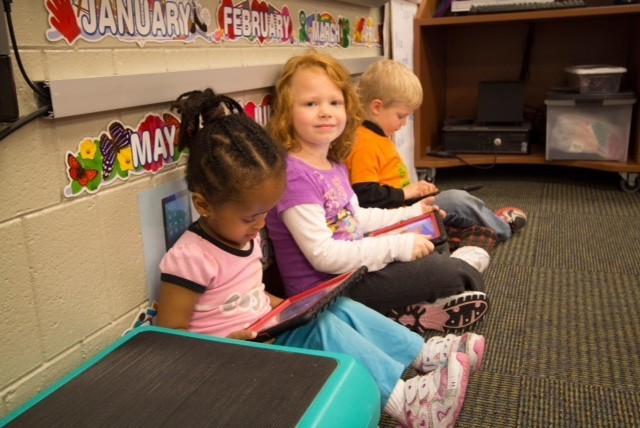Below are resources for early childhood professionals and those serving the early childhood community.
“Using ‘Innovation’ to Get More Children Into Early Learning Programs.” (Catalyst Chicago, April 8). Illinois has spent just under $5.7 million on its 11 “Innovation Zones,” targeting children from key demographic sectors, such as children who are homeless, from lower-income families, have special needs, or are learning English as their second language. The zones also aim to screen more children for early intervention services and improve the quality of early learning.
Specialist in education opening: The college of education at the University of Illinois at Urbana-Champaign is seeking a specialist in education (head teacher) for the preschool classroom at University Primary School. For more information and to apply, please complete a candidate profile. The review of applications will begin immediately.
Policy Briefing: Ready for School, Ready for Life. Northwestern University Institute for Policy Research is hosting a policy briefing in collaboration with Illinois Congressmen Bob Dold (R-10th) and Dan Lipinski (D-3rd) on Tuesday, May 17, from noon to 1:30 p.m. Over the years, many efforts have been made to improve early learning environments as a means to boost Americans’ job and life prospects. Several new studies are fueling thought-provoking ideas as to what policymakers, parents, and researchers should consider when retooling early-education policies. Join our four experts as they discuss some of this new evidence and what it means for program design and implementation. Registration is required by May 12.
Developmental Foundations of School Readiness for Infants and Toddlers: A Research to Practice Report. The Office of Planning, Research, and Evaluation of the Administration for Children and Families recently published a report summarizing research about children’s development from birth to age 3 in order to highlight areas foundational for school readiness. The authors explore research conducted in the areas of physical development, social-emotional development, approaches to learning, language/communication, and cognition. This guide is intended for use by a wide audience: teachers, home visitors, professional development providers, and policymakers.
“How Much Can High-Quality Universal Pre-K Reduce Achievement Gaps?,” a new report from the Center for American Progress that looks at the impact universal pre-k could have on reducing disparities in access and achievement gaps. It finds it would be a significant impact in the gap for African-American and Hispanic children, as well as low-income children.
“Does Pre-K Work? The Research on Ten Early Childhood Programs-And What It Tells Us” with the American Enterprise Institute highlighting that research shows “some early childhood programs yield particular outcomes, sometimes, for some children.”
Visit the Partner, Plan, Act website to view and download the latest version of the Illinois Early Childhood Collaboration Map. Updates include a statewide visual of collaborations featured in the third edition of the Illinois Early Childhood Collaboration Profiles (2015).
Disparate Access: A Look at Head Start and CCDBG Data by Race and Ethnicity. The Center for Law and Social Policy (CLASP) published a report in February with a follow-up webinar in March on disparities in access to Head Start and child care by race and ethnicity. As the percentage of minorities making up the population of young children increases, this type of research is vital for ensuring equal access and that the necessary resources, such as those required for dual language learners, are made readily available. The February report and webinar from CLASP includes recommendations and next steps for reducing racial and ethnic gaps in access and touched on some real-time examples from California and Mississippi.
Measuring the success of pre-k programs and third grade reading proficiency. A higher education leader asked about measuring the success of pre-k programs and third grade reading proficiency. Our response included state examples and research.

